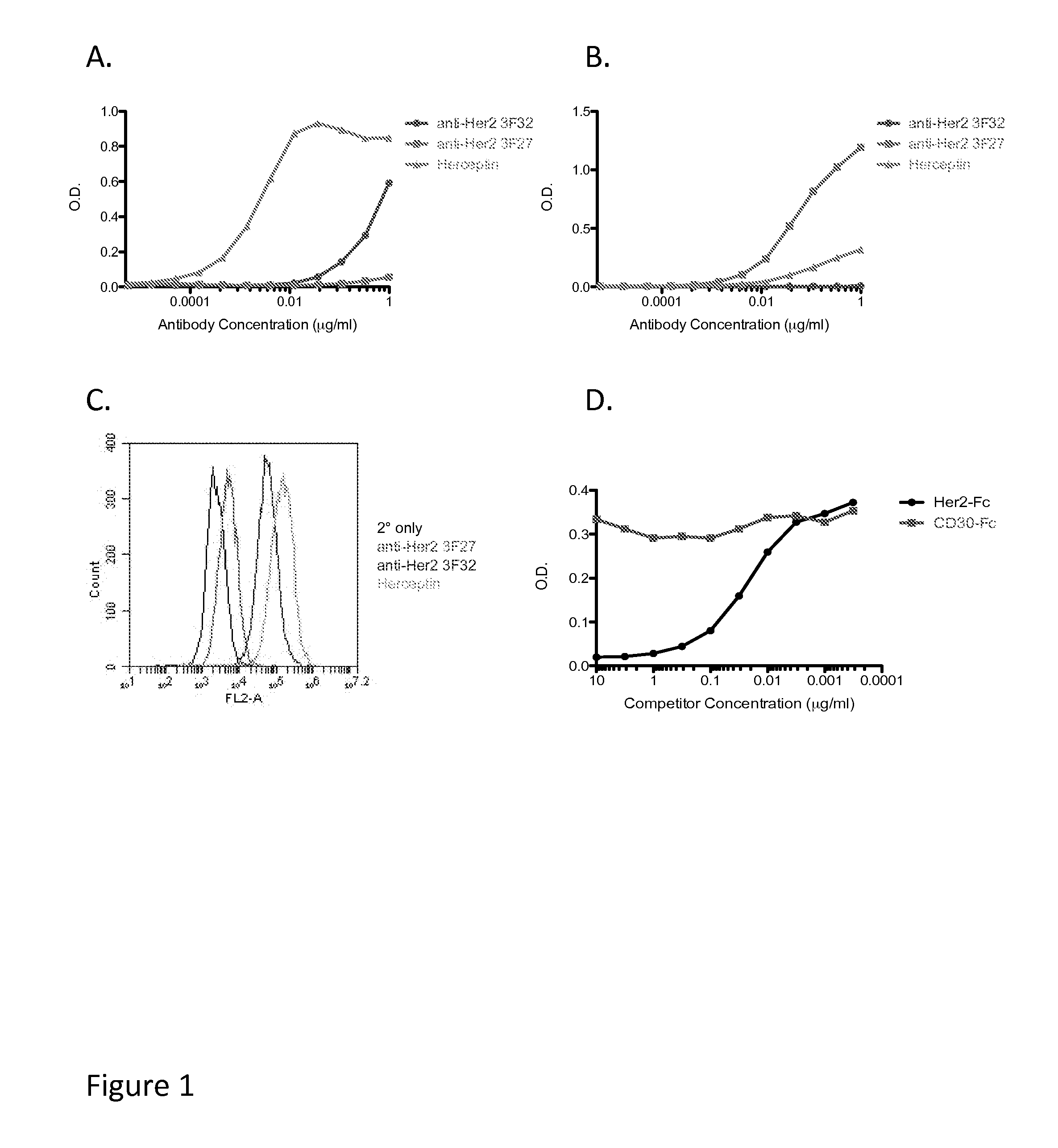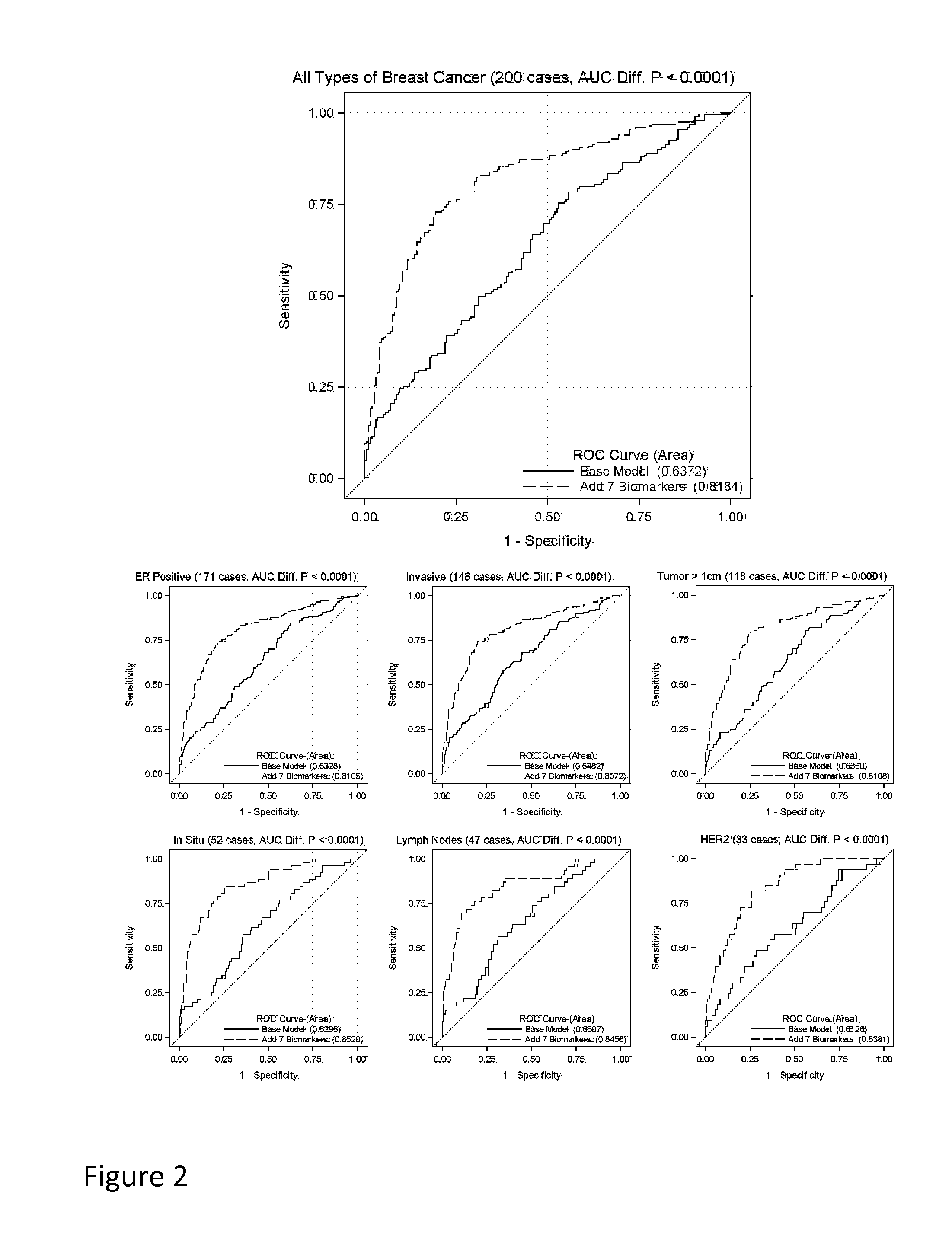Reagents and Methods for Breast Cancer Detection
a breast cancer and breast cancer technology, applied in the field of breast cancer detection reagents and methods, can solve problems such as false negative diagnosis
- Summary
- Abstract
- Description
- Claims
- Application Information
AI Technical Summary
Benefits of technology
Problems solved by technology
Method used
Image
Examples
example 1
[0044]Breast cancer (BCa) patients elicit an autoantibody response against cancer proteins, which reflects and amplifies the cellular changes associated with tumorigenesis. Detection of autoantibodies in plasma may provide a minimally invasive mechanism for early detection of BCa. To identify cancer proteins that elicit a humoral response, we generated a cDNA library enriched for BCa genes that encode membrane and secreted proteins, which are more likely to induce an antibody response compared to intracellular proteins. To generate conformation-carrying antigens that are efficiently recognized by patients' antibodies, a eukaryotic expression strategy was established. Plasma from 200 BCa patients and 200 age-matched healthy controls were measured for autoantibody activity against 20 different antigens designed to have conformational epitopes using ELISA. A conditional logistic regression model was used to select a combination of autoantibody responses against the 20 different antigen...
PUM
 Login to View More
Login to View More Abstract
Description
Claims
Application Information
 Login to View More
Login to View More - R&D
- Intellectual Property
- Life Sciences
- Materials
- Tech Scout
- Unparalleled Data Quality
- Higher Quality Content
- 60% Fewer Hallucinations
Browse by: Latest US Patents, China's latest patents, Technical Efficacy Thesaurus, Application Domain, Technology Topic, Popular Technical Reports.
© 2025 PatSnap. All rights reserved.Legal|Privacy policy|Modern Slavery Act Transparency Statement|Sitemap|About US| Contact US: help@patsnap.com


